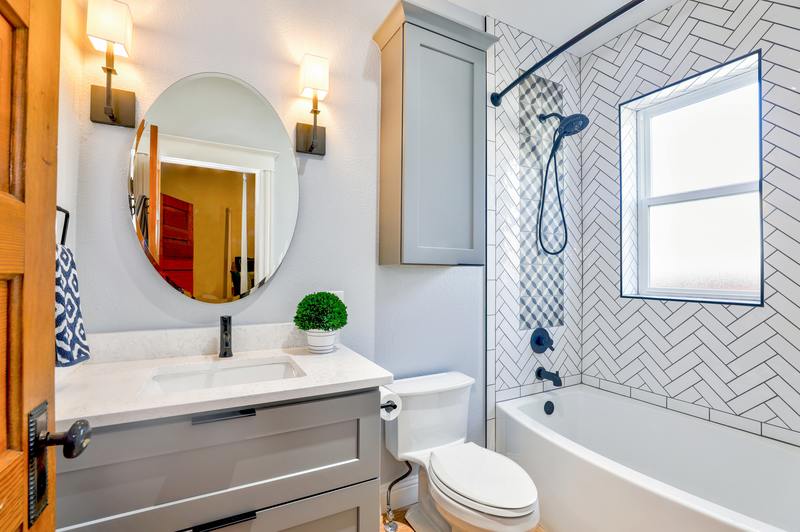You may be wondering how to paint over mildew in a bathroom. Moldy and mildew-infested bathroom walls and ceilings are unsanitary and unpleasant to the eyes.
Several steps need to be done when painting over mildew and molds, but it is necessary to remove mold and mildew first before painting it over. Mold flourishes on moist surfaces in dark, humid restrooms with insufficient ventilation.

When the disgusting fungus is ignored and allowed to grow throughout the house, damaging tile grout and walls, it becomes a severe problem. When it comes to painting, this offers a significant obstacle.
You’re not solving the problem if you paint over the mildew. It’s a short remedy for unsightly stains, but it won’t address the root of the problem.
When you paint over mold, the paint will chip, flake, and bubble, indicating that the mold or mildew is still developing underneath. Painting over it will serve to exacerbate the problem while temporarily masking it.
Steps To Follow On Painting Over Mildew In A Bathroom
Painting over mold or mildew will hide the black spots forming, but it will not solve the problem. Both mold and mildew thrive in environments with adequate moisture to support their growth.
Mold-resistant paint can help prevent mold growth, but it won’t be able to stop it once it’s started. Since paint alone will not eliminate mold or mildew, it is critical to determine why and where the mold is growing.
Ignoring the root of the problem and failing to figure out where the mold comes from will only give you more stress. Even if you try to cover it by painting over it with a moisture-resistant paint primer or other paint solution, mold and mildew will continue to return to the surface and reappear.
With that, here are four steps that you must do in painting over mildew in the bathroom:
Step #1. Find and eliminate the source
As mentioned before, merely painting over mildew in your bathroom will not solve the problem. After some time, failing to determine and deal with the root of the mildew problem will result in another reoccurrence.
Once you are done determining and fixing the root cause of the problem, you must also treat the area before painting to eliminate the mildew spores left behind.
Some of the causes of concern for mildew and molds are inadequate ventilation. If your bathroom has an installed exhaust fan, it is recommended to clean out your fan to avoid dust build-up that may hinder its operation.
Also, try to check and fix leaky pipes and other plumbing issues. You can read this article on how to remove mold from water damage.
Step #2. Scrub and clean the mildew out of the bathroom
When it’s time to treat the mold, make sure to put on safety gear like a respirator mask, gloves, and goggles.
Some people choose to kill mold and mildew by spraying it with a solution of bleach and water. This method is effective on the surface, but it does not kill mold that has penetrated deep into drywall or wood.
The root of the mildew problem can be treated by soaking the area with vinegar and spraying it on the mold.
You can also buy fungicides and apply them to the affected regions. To completely eradicate mildew, be sure to clean as much as you can cover as possible.
Step #3. Applying primer
It’s time to choose a high-quality moisture-resistant or mold-resistant primer after removing the infestation. These primers will not destroy mold and mildew, but they will stop it from growing in the future and prevent stains from showing.
After applying the primer, paint the area with two coats of water-resistant semi-gloss or satin paint.
If the mold or mildew in your bathroom is overwhelming you, or if you have a pre-existing respiratory or immunological condition, you can try to contact a professional mold removal and cleaning service. Here’s an article about the common places to check for mildew in house.
Apply the primer to the walls with a paint roller dipped in it. Pay significant consideration to any locations that have previously shown mold stains.
If you have an exhaust fan installed, keep it running during application to prevent paint fumes from accumulating in the room. Make sure you get good coverage in corners, and within any wall cavities you can reach with the paintbrush.
Allow the primer to dry for the entire amount of time advised by the manufacturer, then inspect the walls for mold spots that have bled through. If there is any bleed-through, try to apply a second coat.
Allow the primer to dry out completely before applying the paint.
Step #4. Paint over
After the primer has dried, you may finally begin painting the area. It is preferable to repaint the entire bathroom rather than just the moldy region for a good, even finish.
Use moisture-resistant paints that enable moisture to flow out instead of absorbing it into the drywall or wood for the most significant effects. These moisture-resistant paints typically have a glossy appearance.
Conclusion
Now that you know how to paint over mildew in a bathroom, unsightly mold and mildew stain won’t be a problem anymore. Always remember to do proper maintenance and cleaning in your bathroom to avoid getting mildew and molds from now on.
